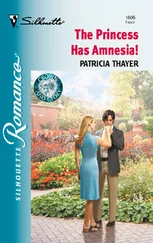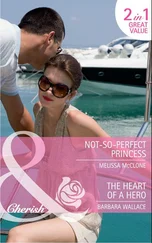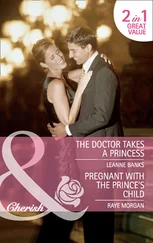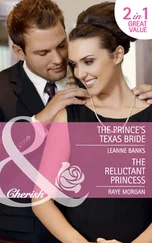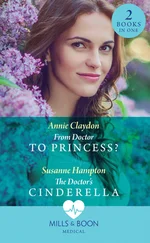Most of the time the house was still. The Prince and Princess were usually out and the staff retreated to their places behind the scenes. Bursts of sudden activity broke the stillness, however. Every royal arrival or departure was marked by the slamming of doors, the bustle of domestic staff and, as often as not, the anxious pacing of the private secretary. Meanwhile, in the sewing room, the pantry, the kitchen and the nursery (not to mention the brushing room, the police room and the cellar) a large staff unobtrusively maintained a style of life that had changed little in a hundred years. Yet if you sent the staff home, closed the curtains and forgot to turn on all the lights, no amount of TV channels, loud music or ringing telephones could keep the darkness at bay.
Of course the house had been made comfortable – especially if you like lime-green carpet – but unless you had all the lights on, even in daytime it was gloomy. The Princess’s sitting room was the sunniest in the house. Its tall windows looked down on a pretty walled garden where she sometimes relaxed on summer evenings (though her favourite place for sunbathing was on the roof terrace). It also looked down on the front door so she could see or hear everybody approaching. She had very acute hearing. Inside, it was a grown-up version of a teenager’s room. There were two pink sofas by the fire and a smart writing desk by the window, but there were also soft toys, cushions that said ‘Good girls go to heaven – bad girls go everywhere’, and children’s school paintings on the walls. Every flat surface had photos, Halcyon Days enamel boxes or Herrend figurines crammed on to it. It was cheerful, girlish and very cluttered. It smelt good too. There were always flowers – lilies were a favourite – as well as potpourri and scented candles.
She must have been in her sitting room that day as I made my cautious approach to the anonymous black door that was to be my entrance to the world of the Waleses. I tried to look calm on the outside, as if I turned up at palaces every day, but inside I was quaking … and curious.
Before going back to the reality of my very different life in the Navy, I decided to enjoy this unexpected opportunity for as long as it lasted. I would use the chance to find out as much as I could about this woman who fascinated millions of people who had never met her and never would do so. I was not fascinated myself; not really. I already knew that would not be an advantage for anyone trying to work for her. But if I was going to have to meet this beauty, about whom I had unavoidably read and heard so much, I might as well make the most of the experience.
Nervously, I tried to check my reflection in the opaque window of the front door. I had an idea that equerries to Her Royal Highness the Princess of Wales were several inches taller than me in their Gucci loafers and carried a reassuring air of labradors and sports cars. They certainly did not lose their cuff links.
Summoning up all my stiffening thoughts, I pressed the bell. I could not hear if it had rung, so after several minutes I pressed it again, just as the door opened to reveal the Prince of Wales’s butler. He was about my height and wore a dark blue jacket with the Prince of Wales’s cypher on the lapels. He looked politely unimpressed. ‘Oh yes,’ he said. ‘Come in.’
Later, I came to know Harold Brown well and grew to admire his professionalism. At home and abroad, he quietly bore the hundreds of little stresses that came with dealing with his royal employers at their less attractive moments. His gift as a mimic had me crying tears of laughter into my whisky on many foreign tours. That afternoon, however, he was every inch the guardian of his master’s privacy and impassively allowed me to follow him to the Equerries’ Room where I was to await the royal summons.
Like so much of the apartment, although undeniably comfortable and well appointed, the Equerries’ Room was dark. Clever effects had been achieved with concealed lighting, pastel colourings and flowers, but the over-riding impression was one of pervasive gloom.
Two people were already there – the Princess’s lady-in-waiting, Anne Beckwith-Smith, and her current equerry, Richard Aylard. They were there to examine me as a possible recruit to their exclusive way of life. During the last few days they had been examining five others as well, of course, so they were understandably distant, if polite.
I was polite too – this was surely part of the selection process – and determined, like the butler, to look unimpressed. But I did need to go to the loo. Badly.
Groping in the semi-gloom of the cloakroom, I became the latest visitor to fumble for the trick light switch on a fiendish trompe l’oeil before finding the real switch on the wall behind me. The humour continued on the other walls, where original cartoons celebrated the Prince of Wales’s talent for self-deprecation. Other pictures showed the Prince and Princess in mostly military group shots, and the image of country-house-style domestic harmony was completed with some equestrian prints. Looking more closely, however, I could not help noticing that even the most recent photograph must have been at least five years old and all the cartoons featured a distinctly bachelor Prince.
Of course I had read the tabloid rumours about the marriage – there had recently been a furore about a visit to a badly flooded area of Wales, when the couple’s visible estrangement had been more of a story than the floods themselves. Like practically everyone else in the wardroom, I had also tittered over Sylvie Krin’s imaginatively romanticized reports in Private Eye . But nobody really knew what was happening. Everybody just assumed that, whatever their private difficulties, the Prince and Princess would stoically maintain the outward unity that was expected of them.
Although schooled by my upbringing to view the monarchy with reverence – and still very much in awe of my surroundings – I already felt an inkling of critical detachment. Later, it was this ability to put some distance between myself and the job that helped keep me sane. Having no strong English ‘county’ background made this easier, I thought. So did the years I had spent living in the Irish Republic. Nevertheless, I happily accepted that if I was to become even a temporary member of the courtiers’ charmed circle I had to accept that royal people by definition exercise a supreme authority. It was an article of faith.
This was obviously a historical anachronism, but I rather liked that. Anyway, I felt quite sure that somewhere wise heads must long ago have worked out the answer to a nagging question. How, I wondered, would I reconcile that historical anachronism with the harsh realities of a world which did not swallow articles of faith quite as readily as it had in more deferential times? Perhaps, from my seat on the sidelines, I would learn how it was done.
Without apparent warning, we were on the move. Following the impassive butler up KP’s broad staircase – a steep hill of lime green with pink fleurs-de-lis – our conversation seemed suddenly too loud. As we approached the summit our voices fell to the self-conscious level you might hear in a church or a ward for the gravely ill. We were led into the drawing room, blinking against the sudden bright sunshine. In the glare I registered the room only as an overexposed negative. Impressions of family photographs, great art and pastel fabrics swam at me against the light. Conversation dwindled to nothing as we stood and fidgeted.
Suddenly a door at the far end of the room opened and the Princess of Wales entered at speed. Squinting horribly against the sun, I prepared to make my bow while trying desperately to see if she was even looking in my direction.
Читать дальше


